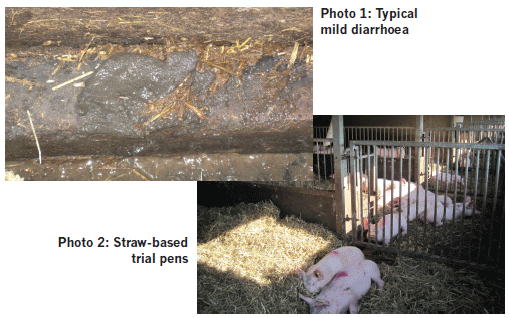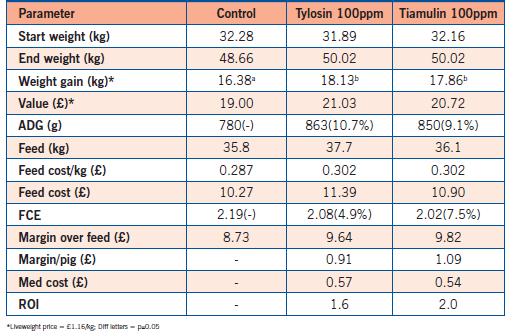



Comparison of Tiamulin (Denagard) with Tylosin (Tylan) Premix for the Treatment of Ileitis
Both medications were highly effective in treating a relatively mild ileitis infection but the tiamulin treatment gave a higher return on investment, according to research reported by David Burch (Octagon Services Ltd) and others at the 2012 IPVS Congress in South Korea.Introduction
Ileitis, caused by Lawsonia intracellularis (Li) is endemic in the UK with approximately 95 per cent of farms being infected (Mortimer et al,. 2000). Both tiamulin and tylosin have been shown to be highly effective in treating artificial challenge infections with Li (McOrist et al,. 1996, 1997) when administered in the feed. It was the purpose of this study to compare the efficacy of these two antibiotics under field conditions.
Materials and Methods
Bishop Burton College’s pig unit, comprising 220 sows, farrowing through to finishing, was a high welfare and high health unit. Pigs were reared on a solid-floor, straw-based, scrape-through system, allowing easy faecal access. The pigs were free of enzootic
pneumonia, swine dysentery and there were no clinical signs associated with Streptococcus suis or Actinobacillus pleuropneumoniae.
The presence of Li had been demonstrated in the faeces of grower pigs (10 weeks plus) and seroconversion was 100 per cent by 17 weeks
of age. Non-pathogenic and low-pathogenic Brachyspira
innocens and B. intermedia, respectively, had also been
identified. Clinical signs of ileitis, such as soft diarrhoea
(see photo 1), were present but generally in a mild form.
On day 0, 96 11-week-old pigs were tagged, weighed and divided
into 12 pens containing eight pigs, four male and four female per pen
(see photo 2). They were allocated to three different treatment
groups on a block and average pen weight basis.
The treatment groups comprised:
- untreated controls
- tylosin treated group (100ppm for 21 days), and
- tiamulin treated group (100ppm for 21 days).
The pigs were scored for clinical signs of diarrhoea (DS), faecal samples were taken on a pen basis and pooled for PCR testing for Li and Brachyspira spp., and blood was taken from three pigs per pen, to determine Li seroconversion. After the medication period (day 21), the pigs were reweighed scored and sampled. The feed administered over the three-week period was also recorded on a pen basis, so that feed conversion efficiency (FCE) could be determined.

Results:
The results are summarised in Table 1 and 2.
Table 1. Comparative performance/financial results

Table 2. Disease scores, faecal and serology results on day 21

Conclusions and Discussion
Both medications were highly effective in treating a relatively mild ileitis infection, with significant improvements for weight gain and diarrhoea score.
Tylosin gave a slightly better growth rate and tiamulin a better FCE. Brachyspira spp., infections (B. innocens and B. intermedia) disappeared in the tiamulin-treated pigs. Li could be found in all three treatment groups.
On a financial basis, the extra margin per pig over medication and feed costs was higher for the tiamulin-treated pigs than for the tylosin-treated pigs. This meant that the tiamulin treatment gave a higher return on investment (ROI) than the tylosin treatment.
References
1. McOrist, S. et al., 1996. Vet. Rec. 139:615.2. McOrist, S. et al., 1997. A.J.V.R. 58(2):136.
3. Mortimer, I. et al., 2000. Proc. I.P.V.S. p110.
July 2012






